I’ve referred on several occasions to Norwich’s sense of spirited independence. We caught the briefest glimpse of this in the previous post on Parson Woodforde who, instead of describing a country facing war with revolutionary France, diverted us with a catalogue of entertainments and his meat-rich diet [1]. In late eighteenth century Norwich there was such support for radical, even revolutionary, politics that Prime Minister William Pitt called it a Jacobin city [2,3].
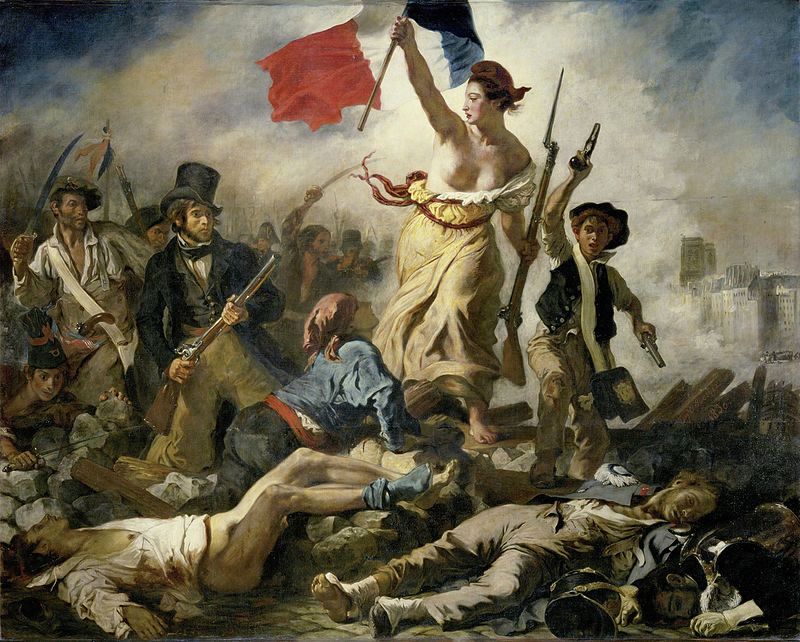
As a rich and loyal city, Norwich had been given a degree of political independence by several monarchs. In 1194, Richard the Lionheart allowed the royal lion to be shown on the city’s coat of arms – a sign that marked the city’s right to elect its own Reeve in 1194. In 1404 Henry IV increased the number of MPs from two to four and granted the city the special status of a county governed by a sheriff – a status that lasted until the local government reforms of 1974. This allowed for civic matters to be decided in a common assembly composed of freemen whose fathers had been freemen, or who had been apprenticed to a freeman for seven years, or who purchased the right [4]. Granted at a time when few common men had the right to vote, these historic freedoms paved the way for the violent political factions that evolved in the years after Henry VIII altered the relationship between the Church and the Crown. Historian Mark Knights commented that by 1681 the city was polarised between ‘two factions, the Whigs and the Tories, and both contend for their way with the utmost violence’ [3]. In the late eighteenth century the Whigs rallied under the Blue and Buff (or Blue and White) flag, and Tories wore Purple and Orange. [3]. To oversimplify their differences, the Whigs were originally liberal parliamentarians opposed to the absolute monarchy offered by the Catholic James II, while the conservative Tories were high church monarchists – political stances that echoed the earlier divisions between Roundheads and Cavaliers

Norwich then – unlike other big cities such as Exeter and Bristol – enjoyed a remarkably open and popular civic structure. In 1790 there were 2480 electors, 295 of whom were freeholders and the remainder presumably freemen. They could vote three times a year: for the mayor, the sheriff and the common council. In addition, Norwich freeholders could vote for two MPs. The frequency of elections ensured the political pot never went off the boil, perhaps explaining the reports of post-election fights, leading on occasion to the reading of the Riot Act [3].
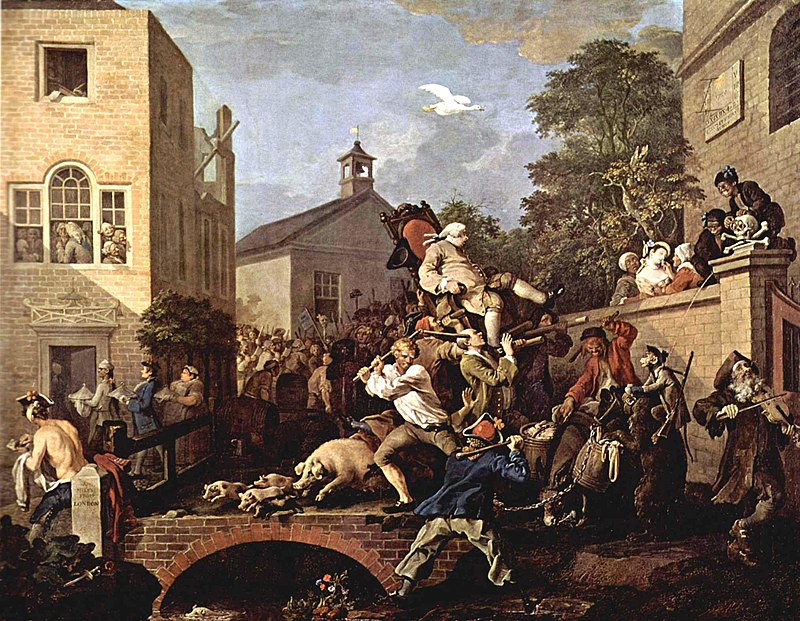
After the Catholic monarch, James II, attempted to impose absolute rule on the country but was resisted by the Glorious Revolution of 1688 in which he was displaced – bloodlessly – by the Protestant William of Orange and his wife Mary II. From this time, Norwich Tory sentiment was tinged with Jacobitism – support for the restoration of the Catholic House of Stuart (Jacobus = James). During the Jacobite Rebellion of 1745-6, Charles Edward Stuart’s army crossed the border, invading as far as Derby. When the Duke of Cumberland defeated the Jacobites at Culloden the Norwich Whigs celebrated with an extravagant feast and erected a triumphal arch in the marketplace. The structure was covered in 96 yards of Persian silk that allowed candles inside to highlight painted patriotic words, such as ‘Religion’ and ‘Liberty’.
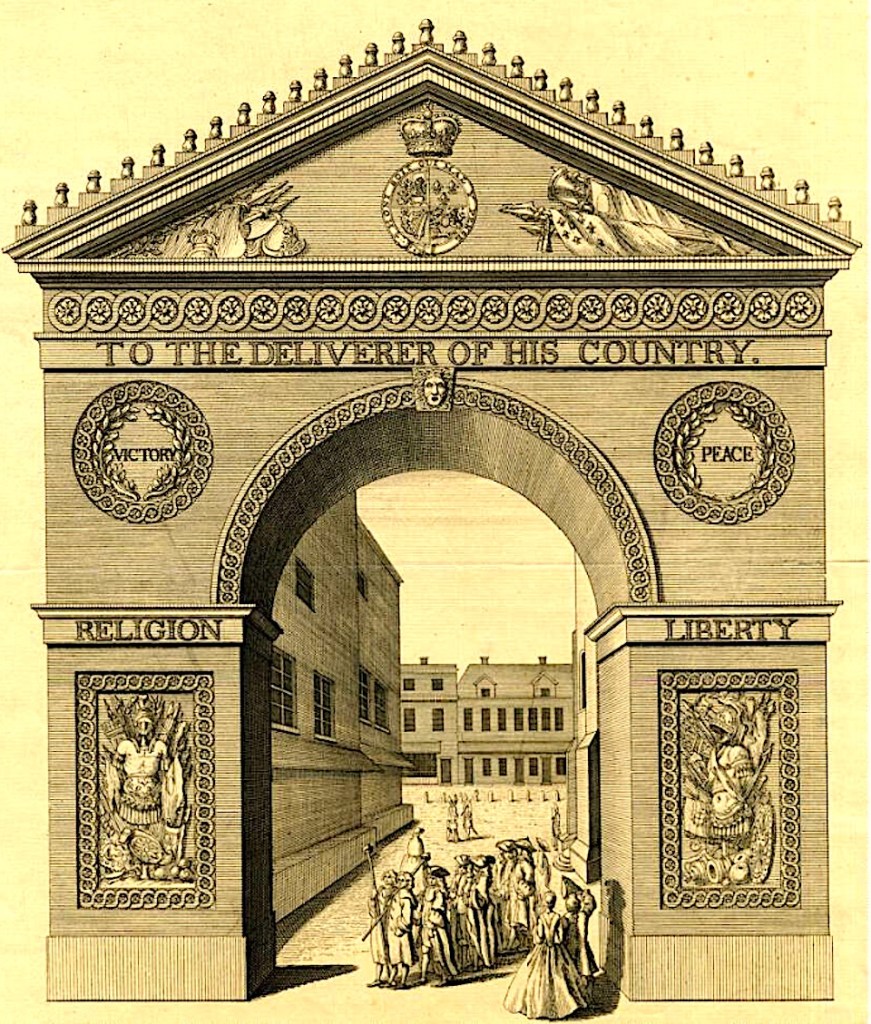
Liberty – code for political and religious independence – was the watchword for the Whigs. In 1768, Thomas Beevor stood as a Whig candidate in the Norwich parliamentary election, promising to fight against ‘all attempts upon the liberty of the Subject and every other unconstitutional measure’ [3]. He was unsuccessful, and again in 1786 and 1790. (This would have been Sir Thomas Beevor (1726-1814) of Hethel Hall; Hethel now being the location of Lotus cars, some ten miles south-west of Norwich).
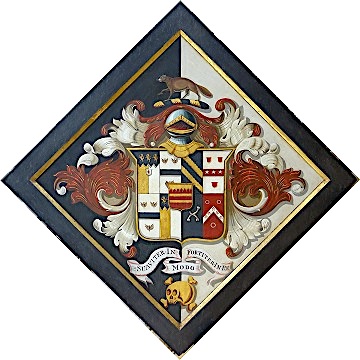
To stifle Beevor’s independence, the sitting MP – Harbord Harbord, 1st Lord Suffield of Gunton Hall – was asked to join forces, or make a ‘junction’ with, another candidate, Edmund Bacon. Five hundred Norwich freemen cried out against this chicanery [3].

Having only just subdued its own rebellion, England in the last quarter of the eighteenth century faced revolution on three sides: the American War of Independence (1775-1783), the French Revolution (1789-1794) and the Irish Rebellion of 1798. Unsurprisingly, Norwich politics split along lines dictated by local reaction to these turbulent events. This was reflected in the career of the city’s most eminent politician of the period, William Windham (1750-1810) who was member of parliament for Norwich from 1789-1802 [6]. The son of William Windham Senior of Felbrigg Hall in North Norfolk, Windham Jr was intellectually gifted, eloquent and charming …
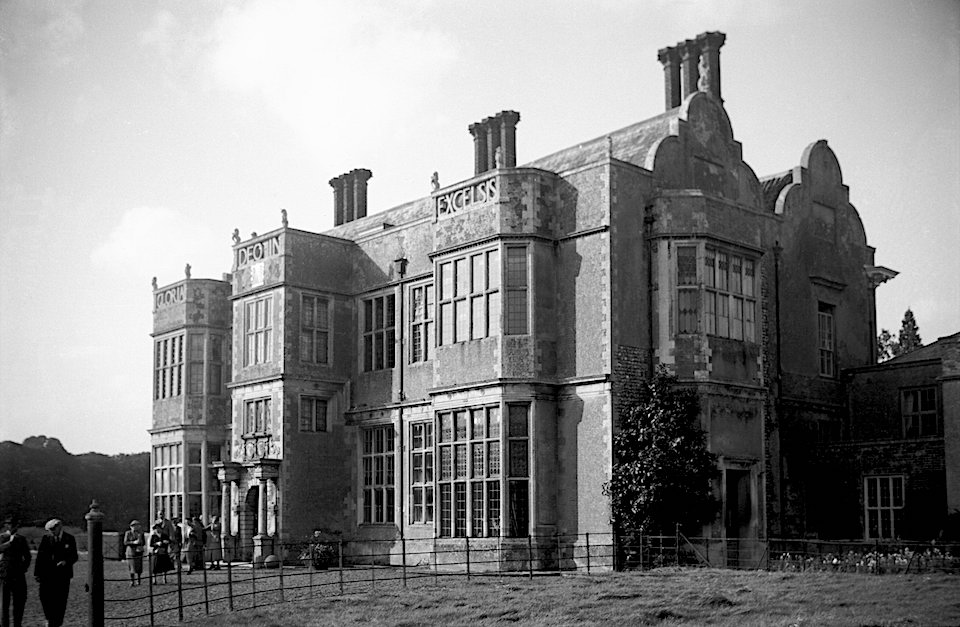
… but was chronically indecisive. In 1792, Windham supported the Ministry in calling out the militia, now voting for measures of which he had previously disapproved) [2]. Cruikshank’s parody of the MP as Weathercock Windham has him saying, “Down with the Volunteers !! … They are all Democrats!” To the right the common man says, “Why Master Whirligig … now you want us not to fight that Butcher Boneyparte...”.
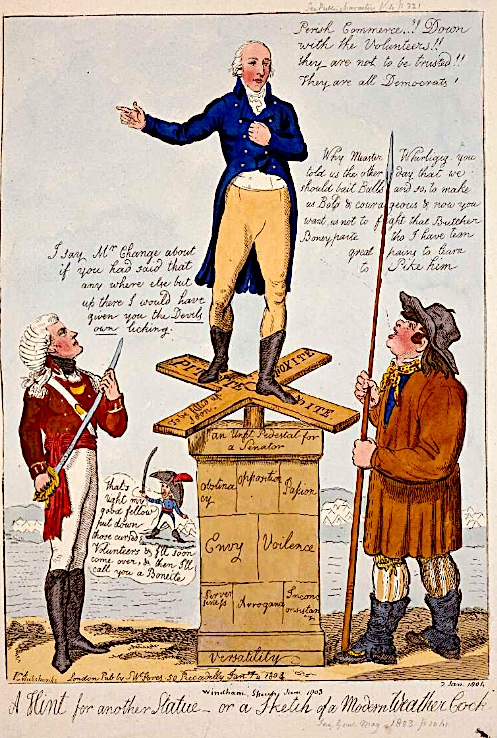
In his first public speech in Norwich (1778), Windham had spoken against the American War of Independence but later opposed it [6,7]. Initially he supported the French Revolution but then became a leading anti-Jacobin*, deeply concerned about the spirit of revolution that was spreading through the kingdom. [*The revolutionary and violent left-wing Jacobin Club was so named because it met in a former convent of the Dominicans, known in Paris as Jacobins.]
Windham was an enemy of the slave trade and should have been a favourite of Norwich’s intellectual left, which included abolitionists like Elizabeth Fry and Amelia Opie – the latter having travelled to France to see the revolution for herself [8]. However, his contradictory views on reform and his opposition to peace with France alienated the city’s Whigs. In 1794, this one-time Blue and White executed an about-turn when he became war minister on an Orange and Purple ticket [2]. Two years later, Parson Woodforde wrote, ‘Mr Wyndham very unpopular at present amongst the Revolutionists and which are great numbers at Norwich, especially Dissenters. Knuckle of Veal and boiled tongue for dinner to day.’

By 1802, Windham had come out as a consistent orange-and-purple voter, ensuring that the Norwich radicals would give him an uncomfortable ride when he returned to the city for parliamentary elections. The MP had recently spoken in favour of bull baiting and this satirical cartoon shows Windham as a bull being tormented by local weavers portrayed as dogs wearing their revolutionary red bonnets. Windham lost by 60 votes and this ‘Norwich Bull-Bait’ was claimed ‘a Jacobin triumph’ [6].
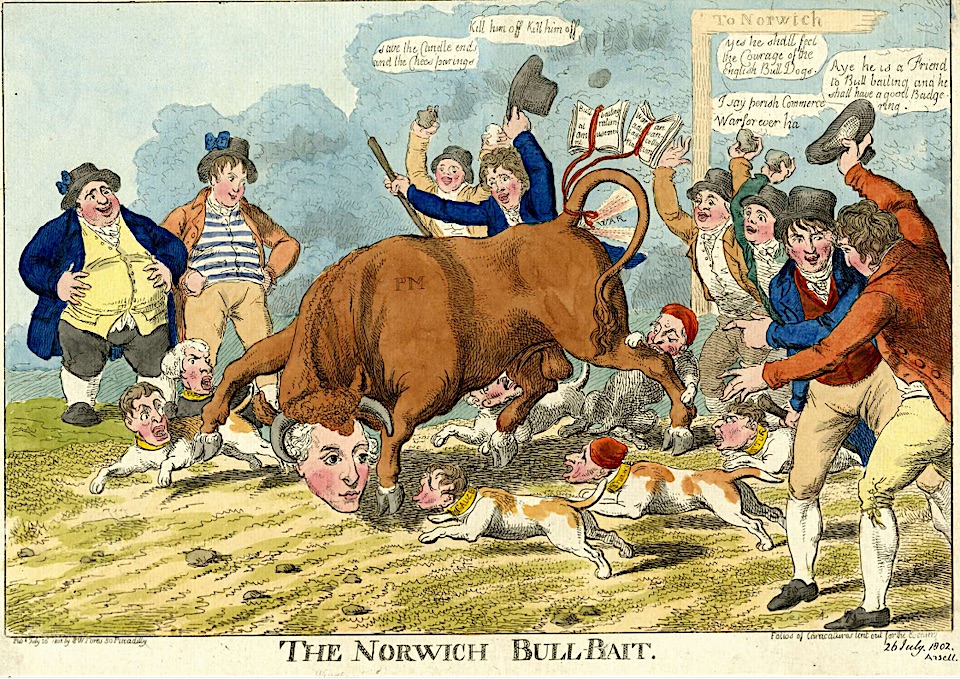
The dog collars bear the names of materials woven in Norwich: ‘Gauze’, ‘Shawl’, ‘Crape’ and ‘Stuf’, suggesting that the Norwich freemen weavers were suffering yet another downturn.
A separate strand of anti-Establishment feeling can be traced to the religious nonconformity that had been strong in Norwich since the late seventeenth century. The Act of Uniformity (1662) aimed to stifle dissent by requiring ministers to observe the rites and sacraments of the Established Church of England or be ejected for their nonconformity. In 1689, the Act of Toleration allowed Protestant nonconformists to have their own places of worship on condition they made certain oaths of allegiance. The beautiful Old Meeting House in Colegate was one of the first such tolerated places (1693) [9].
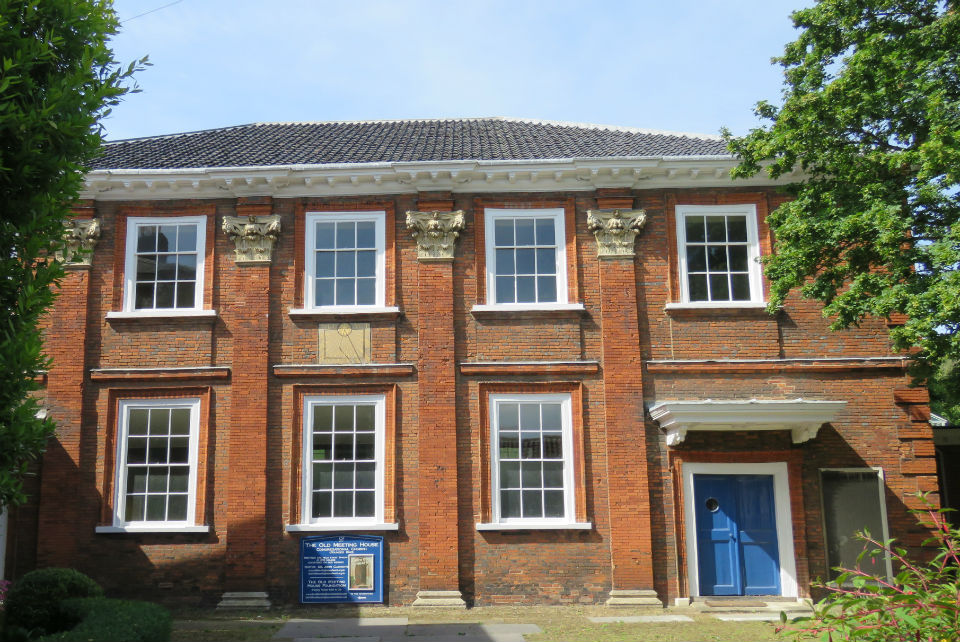
Politics and religious freedom were tightly interwoven, making it inevitable that dissenters would have to enter the political sphere if they were to protect their own strand of independence. The Norwich Quakers were prominent dissenters; John Gurney, father of Elizabeth Fry and partner in Gurney’s Bank, is said to have bankrolled the Norwich Blue and Whites (Gurney’s Bank merged into Barclay’s a century later). It is estimated that one seventh of the Norwich population were Protestant dissenters at the beginning of the 1700s. And, “Between 1740 and 1760 half of the serving mayors came from nonconformist backgrounds” [3]. Dissent was prominent in the wards either side of the River Wensum, in Wymer and Norwich-over-the-Water. This was in the heart of the city’s textile industry where Jeremiah Ives and Thomas and Robert Harvey – eighteenth century mayors made rich by the wool trade – had houses on Colegate. Both had country estates in nearby Catton [9] and Ives’ Catton Hall is especially notable for its parkland designed by Humphry Repton.
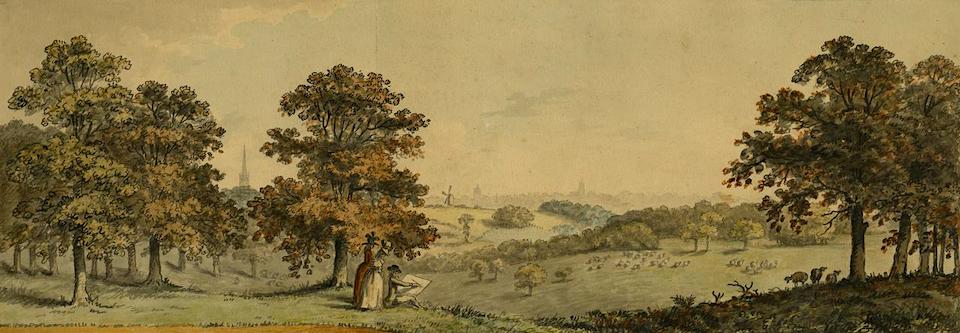
Ives, as a Whig mayor, kept a paternalistic eye on his supporters. In return, the city’s yarn makers presented this portrait for helping their cause. And when he was elected mayor for the second time the parishioners of St Clement erected a triumphal arch spanning the end of the street, to his townhouse at number 1 Colegate [11].

The Harvey family were also known for their support of the weavers and for the distress of the poor. Like Ives, second-time mayor Robert Harvey was the recipient of a triumphal arch covered in evergreens and draped with flowers, its battlements concealing a music gallery [2]. However, Harvey was less of a hero to his religious neighbours who worshipped down the street; in a political handbill he complained about the ‘duplicity of the Quakers and the cant of the Presbyterians’ [3]. Countering this, Edward Crane, son of a Unitarian minister and himself a preacher at the Octagon Chapel, said that the city had for a long time been slave to the Ives and the Harveys who nominated all the members of the city corporation despite the fact that the city’s freemen were entitled by charter to vote in the common assembly [quoted in 3]. In this one Norwich street we see the struggle between the free church and the rich master weavers for the hearts (or votes) of the freemen weavers.
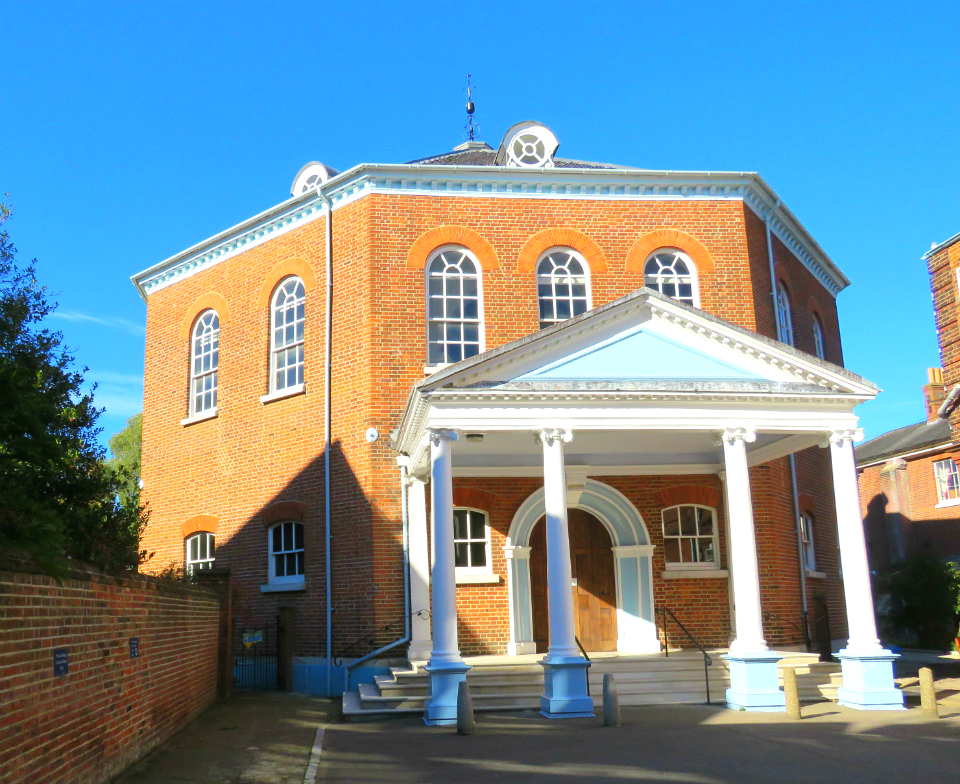
Norwich had a long history of clubs and societies whose political affiliations were so restrictive that The Loyal Society of Worsted Weavers, for example, would throw out any member who voted Tory. At the beginning of the eighteenth century the Artillery Club became the armed front of Whiggism and dissent, cracking heads and giving bloody noses to opponents in the 1716 mayoral elections [3]. Towards the end of that century, the Revolution Society was formed. In CB Jewson’s account [2], the society was formed to celebrate the centenary of the Glorious Revolution of 1688 but it was likely that its founders had their eyes fixed forwards, on events that would lead to the French Revolution (1789). The Norwich Revolution Society consisted of around 4000 members from forty subsidiary clubs whose delegates met at The Bluebell on Hog Hill (now Orford Hill).
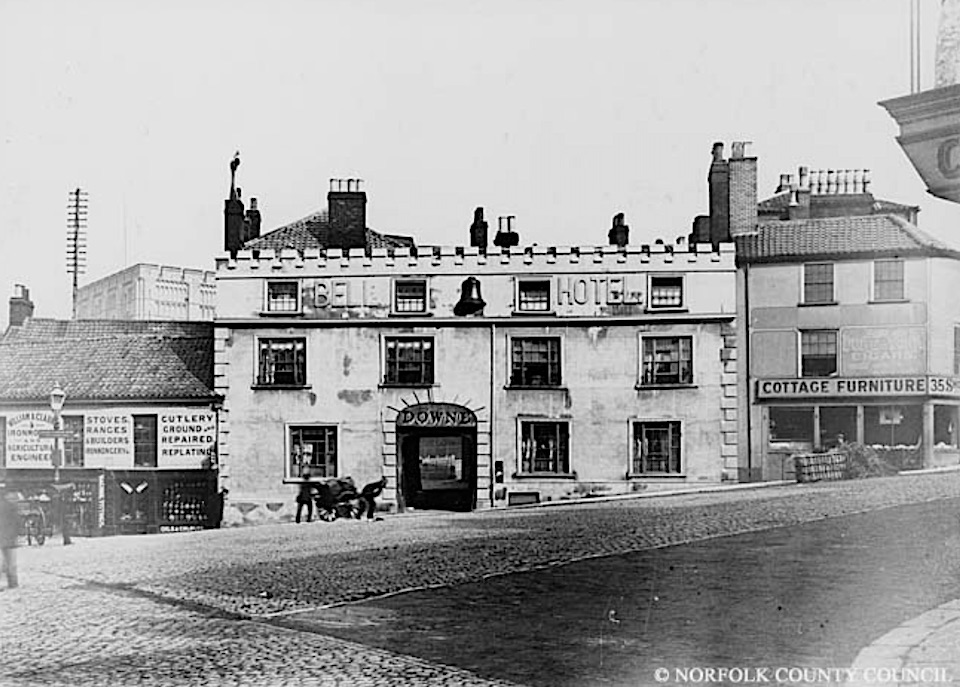
The society was based around a nucleus of well-known dissenters including the Baptist minister Mark Wilks – a party worker for the Whigs. He preached that ‘Jesus Christ was a revolutionist’. On the second anniversary of the French Revolution he gave a sermon on ‘The origin and stability of the French Revolution’, quoting from the bible, ‘If it be of God ye cannot overthrow it’ (Acts V, 39) [2].

©The Trustees of the British Museum
John Harvey, who was Tory mayor in 1792, was notable for introducing what was to become the famous Norwich shawl at a time when the city’s textile industry was in a major recession. That year, at a dinner in the King’s Head, he toasted: ‘May the seeds of sedition never take root in British soil. May Pain (Thetford-born Thomas Paine who had just published ‘Rights of Man’) be expelled from every British bosom’ [2]. A week later, Harvey dined at The Maid’s Head where he referred to those who ‘… meant to delude and ensnare the lower classes of the people, from whose labours our manufactures thrive and commerce flourishes‘ [2]. Evidently, men of business feared the effects of seditious propaganda upon their own workers.
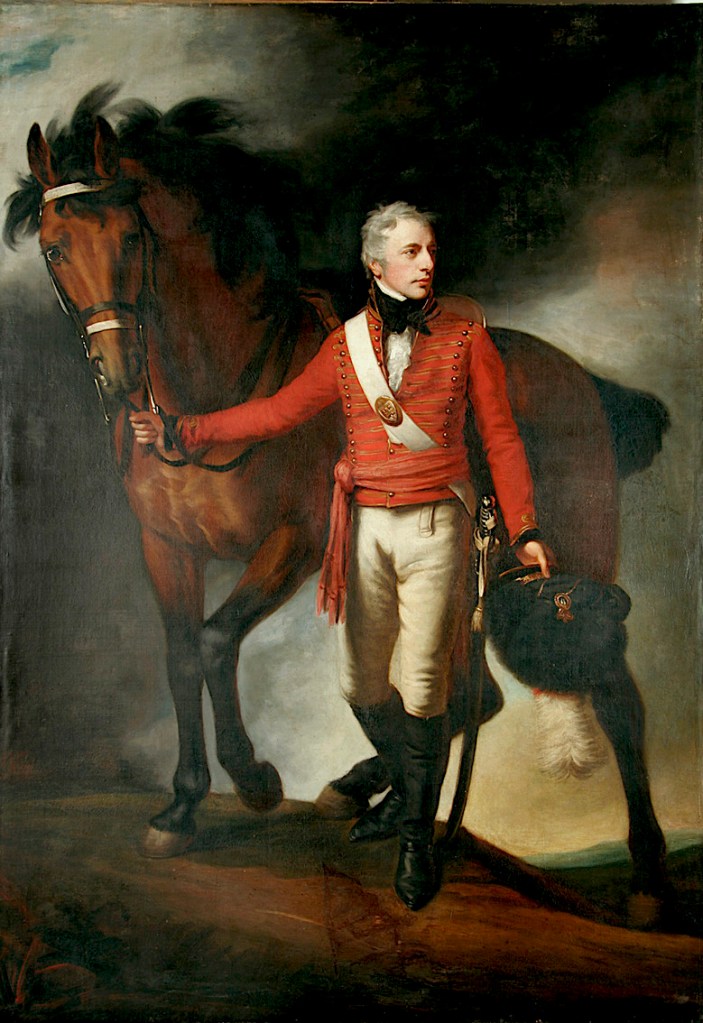
The secretary of the Norwich Revolution Society was Isaac Saint, landlord of The Pelican [3, 13], a public House at 2 Pitt Street, at the corner of Muspole Street and what – after Pitt Street was bisected by the inner link road – became the northern end of Duke Street.
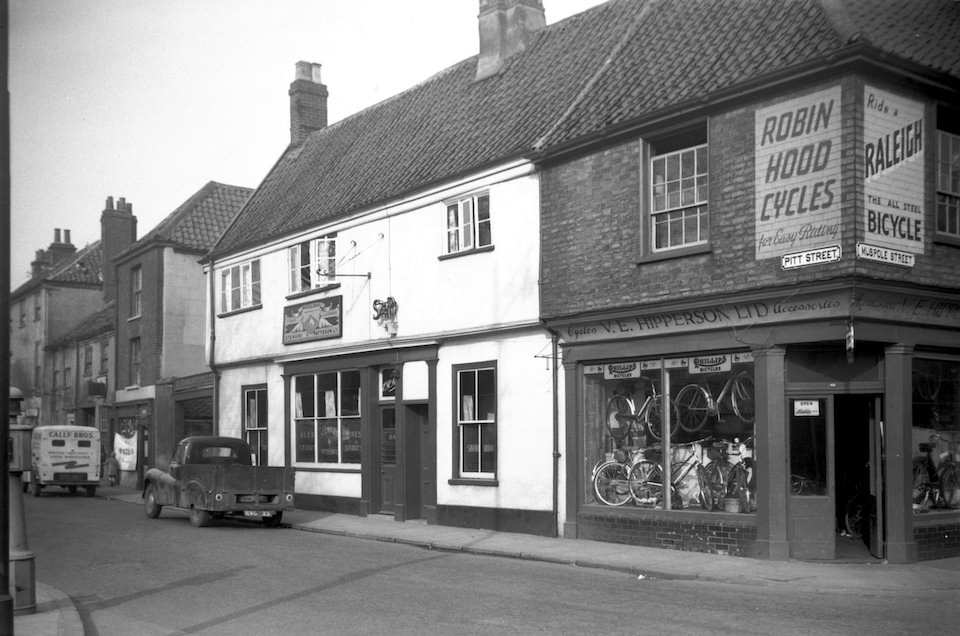
In 1793, at a convention held by the Scottish Societies of Friends of the People, it was decided to correspond with all like-minded societies in the kingdom. The Norwich Revolution Society asked London delegate, Maurice Margarot, to represent them. A few months later, when the society had become the British Convention of Friends of the People, its leaders were arrested. Margarot was charged with sedition and transported to Australia for 14 years. While he waited at Spithead for transportation The Norwich Revolution Society sent him £20 [2].
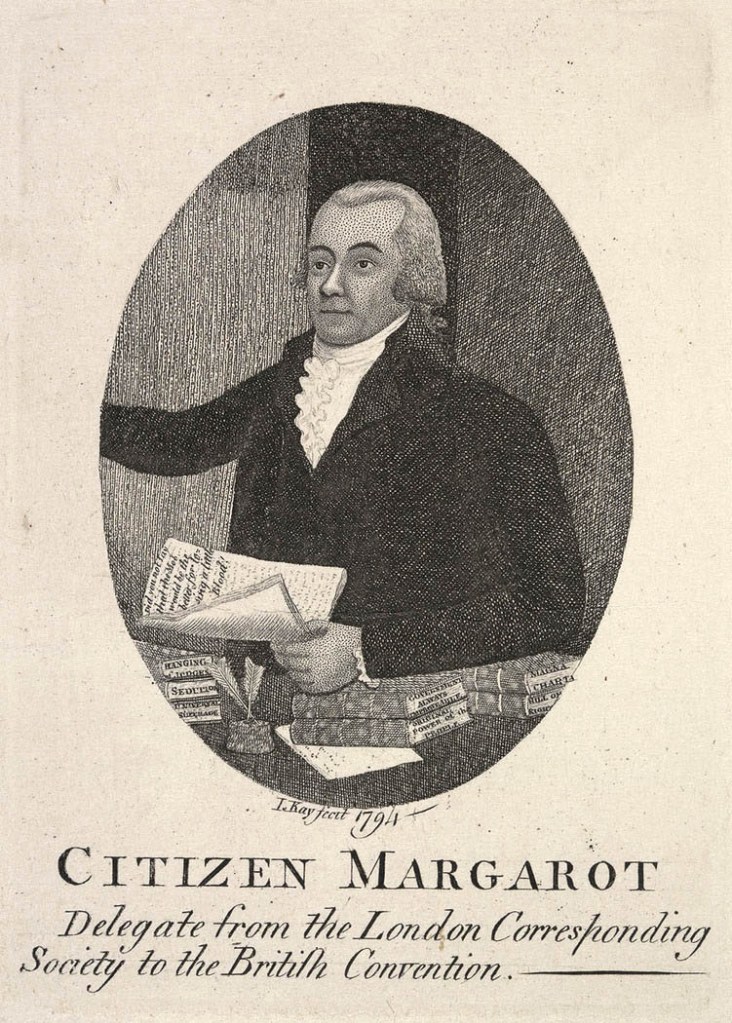
To deflect charges of disloyalty, the Norwich Revolution Society declared that class division, riot and disorder played no part in their thinking. The disclaimer proved ineffective. At a time when the country was at war with revolutionary France the government regarded a country-wide network of radical societies with the deepest suspicion and, in April 1794, two King’s Messengers were sent to Norwich to arrest Isaac Saint. The depth of the Establishment’s concern can be judged from the fact that Saint was interrogated next morning by the Privy Council headed by the Lord Chancellor and the Solicitor General. Apparently, Saint was not sentenced but, since the Habeus Corpus Act had been suspended, he was ‘detained’ for two months. The Revolution Society was dissolved soon after.
©Reggie Unthank 2021
Sources
- https://colonelunthanksnorwich.com/2021/02/15/parson-woodforde-and-the-learned-pig/
- Charles Boardman Jewson (1975). The Jacobin City: A Portrait of Norwich in its Reaction to the French Revolution 1788-1802. Pub: Blackie & Son.
- Mark Knights (2004). Politics, 1660-1835. In, Norwich since 1550 (eds Carole Rawcliffe and Richard Wilson). Pub: Hambledon and London.
- C Berry (1810). A Concise History and Directory of the City of Norwich for 1811. Available online at: https://www.gutenberg.org/files/32829/32829-h/32829-h.htm
- https://bracon-ash-and-hethel-history.webnode.com/welcome-to-bracon-ash/
- https://www.historyofparliamentonline.org/volume/1790-1820/member/windham-william-1750-1810
- https://en.wikipedia.org/wiki/William_Windham
- https://colonelunthanksnorwich.com/2017/03/15/three-norwich-women/
- https://oldmeetinghousechurch.org.uk/brief-history-of-the-old-meeting-house
- https://colonelunthanksnorwich.com/2020/02/15/the-norwich-banking-circle/
- http://www.norwich-heritage.co.uk/monuments/Jeremiah%20Ives%201729%20-%201805/Jeremiah%20Ives%20younger%201729.shtm
- https://www.norfolkpubs.co.uk/norwich/bnorwich/ncbel3.htm
- https://www.norfolkpubs.co.uk/norwich/pnorwich/nchpel.htm
Thanks For background on revolutionary Norwich I am indebted to two sources. The first is Charles Boardman Jewson’s wonderful book on ‘The Jacobin City: A Portrait of Norwich in its Reaction to the French Revolution 1788-1802 (1975).’ This slim volume is fascinating for its insights into late C18 Norwich. Copies are out there on the web. The second is Mark Knights’ insightful chapter on Politics, 1660-1835. In, Norwich since 1550 by Rawcliffe and Wilson (2004). I am grateful to Jill Wright of the Bracon Ash and Hethel website for permissions.

What fascinating insights into staid old Norwich – thanks, Colonel!
LikeLike
We led the way … once. Thank you Caroline
LikeLike
A very interesting read with some great illustrations of some of the people involved and contemporary cartoons. It takes us to the beginning of the end of Norwich weaving too, with the developments of the industrial revolution, mechanising production and the suppression of trade with Europe through Napoleon’s Continental Blockade.
LikeLike
Hi Paul, Yes, it’s sad to see some of the influences on the decline of our textile industry. Resistance to mechanisation lurks somewhere in the background, lack of coal etc. Reggie
LikeLike
Wonderful as always Reggie. I love how Norwich has been significant for such a long time. My dose of the old country in Michigan. And the Canaries are flying high too!
Here’s a dose of life here where I am, seen through my eyes in the fictitious world of Huron City Radio. https://huroncityradio.com/podcasts/
Think Alan Partridge, On the Hour, Down the Line, but from a small boat broadcasting from the great lakes in the American Mid-west.
LikeLike
Hi Daniel, Isn’t it great that the Canaries are ten points clear at the top of the Championship.
Huron City Radio conjures up many things. Never having seen the Great Lakes, the nearest I can get is Alan Partridge in a four-berth leisure cruiser on The Broads. Call sign: “A soupçon of Radio Caroline from somewhere east of Potter Heigham”. You have a great site with, dare I say, an English sense of humuour (sp?). I’m now a follower. Reggie
LikeLike
We get to watch Pukki knocking them in most weekends. Took the family to Carrow Road when we were in England the Christmas before the world stopped.
TheAlan Partridge in Potter Heigham line cause a genuine laugh out loud. And yes, it is fun writing British profanities for my American friends to get their voices around.
I did try and shoehorn song titles from the Singing Postman into one episode. Maybe I will on our summer special.
Hope all is well in England’s second city. Thanks for the follow!
LikeLike
George Borrow refers to rick-burning nearby in his letters.
LikeLike
So it would seem that the general discontent was not confined to the weaving industry and spilled over into agriculture. Thank you John.
LikeLiked by 1 person
From the social history I studied at UEA I seem to recall that post 1815 Norfolk was a hotbed of protest and direct action!
LikeLike
A very good summary of early independent thought (and action) in Norwich. Some of the names are still to be found in Norfolk to this day. To go off at a tangent the picture of Pitt Street from 1956 reminded me that if you took your bike in to Mr Hippersons cycle shop on the corner of Muspole Street in the winter during the late 40’s and early 50’s you might have it mended by one of the Norwich and Yarmouth speedway teams – Sid Hipperson.
Don Watson
LikeLike
Thanks for the information, Don, it brings the Plunkett photograph to life. It was surprising to find that the north end of Duke Street was at one time Pitt Street, of which only a stub remains. Reggie
LikeLike
Pingback: Norwich Guides: Ancient and Modern | COLONEL UNTHANK'S NORWICH
Pingback: The United Friars: Charity and Enquiry in the Age of Reason | COLONEL UNTHANK'S NORWICH